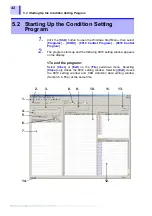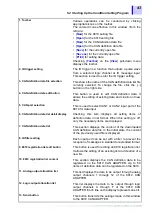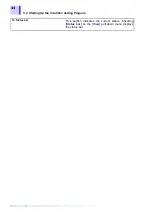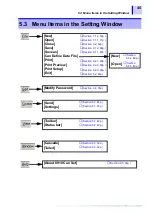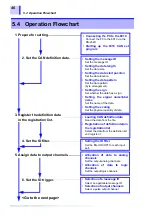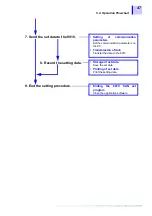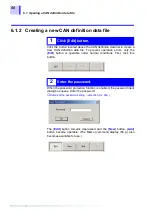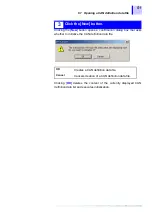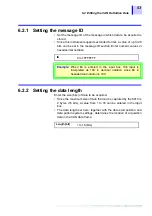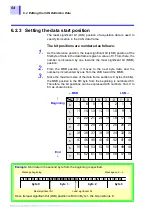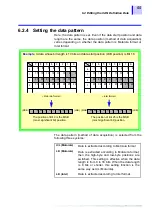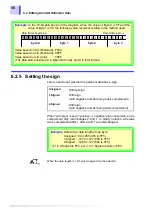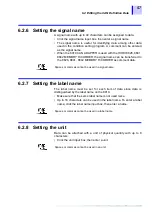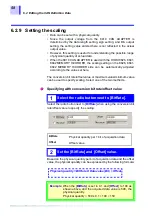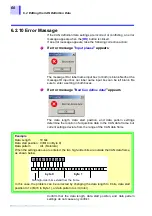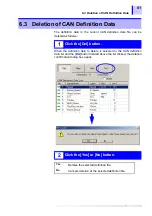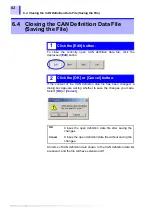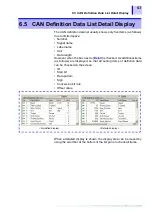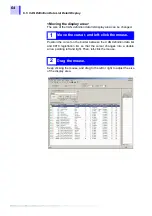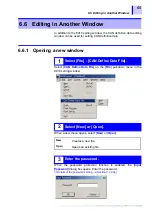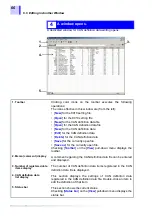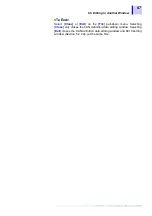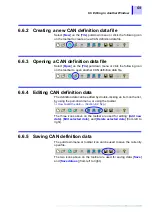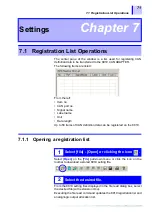
6.2 Editing the CAN Definition Data
56
6.2.5
Setting the sign
This is used to set whether the pertinent data has a sign.
When "with sign" is set in “positive
→
negative" sign conversion, one's
complement only interchanges 0 and 1 in binary notation, whereas
two's complement adds 1 after 0 and 1 are interchanged.
Example
: In the 16-bit data shown in the diagram, when the value of Byte 0 is FF and the
value of Byte 1 is 00, the following value results according to the method used:
Value based on U/L (Motorola) : FF00
Value based on L/U (Motorola) : 00FF
Value based on L/U (Intel)
: 00FF
(The data start position is 8 in Motorola format, and 0 in Intel format.)
7 6 5 4 3 2 1 0 7 6 5 4 3 2 1 0 7 6 5 4 3 2 1 0 7 6 5 4
・・・
byte 0
byte 1
byte 2
byte 3
Data frame beginning
Data frame end
→
Unsigned
Without sign
1-Signed
With sign
(with negative number being one's complement)
2-Signed
With sign
(with negative number being two's complement)
Example
: Data with a data length of one byte
Unsigned : 0 to +255 (00h to FFh)
1-Signed : -127 to +127 (80h to 7Fh)
2-Signed : -128 to +127 (80h to 7Fh)
-1 in 2-Signed is FFh, but -1 in 1-Signed results in FEh.
When the data length is 1 bit, only Unsigned can be selected.
Summary of Contents for 8910
Page 1: ...8910 Instruction Manual CAN ADAPTER EN Aug 2018 Revised edition 7 8910A981 07 18 08H ...
Page 2: ......
Page 8: ...Contents vi ...
Page 18: ...Notes on Use 10 ...
Page 44: ...3 5 Operation Map 36 ...
Page 48: ...4 2 Program Setup 40 ...
Page 56: ...5 4 Operation Flowchart 48 ...
Page 78: ...6 6 Editing in Another Window 70 ...
Page 90: ...7 4 Setting the ID Filter 82 ...
Page 99: ...91 9 2 Setting Data Printout ...
Page 130: ...10 2 Using the 8910 with the 8841 8842 MEMORY HiCORDER 122 ...
Page 147: ......
Page 148: ......
Page 149: ......
Page 150: ......

